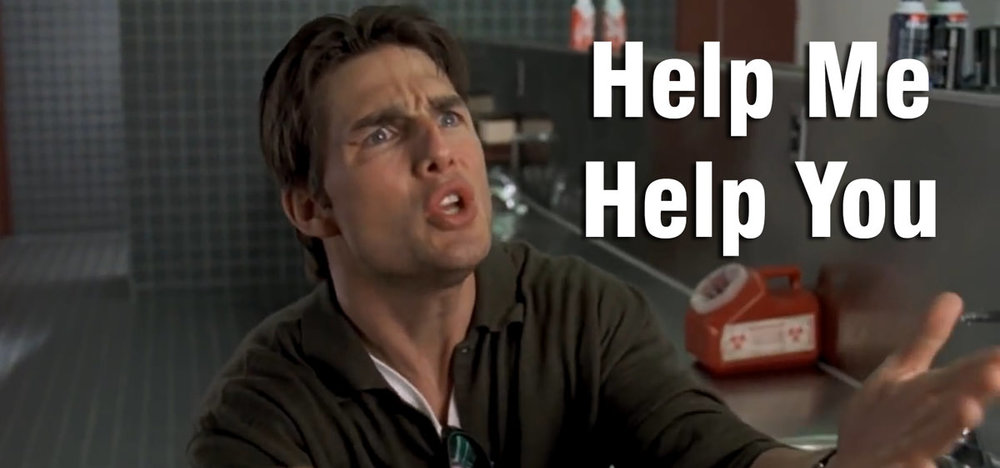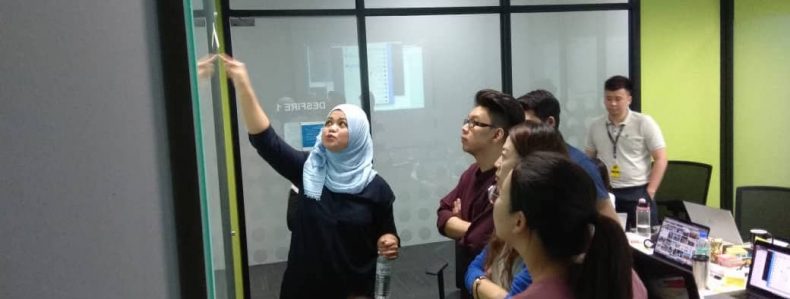One of the biggest things I learnt when I became a UX designer was the importance of soft skills. A UX practitioner relies heavily on person-to-person know how. Knowing what people need and how to craft a solution that is easy to use, useful, and delightful takes a significant amount of reading between the lines and a knack for verbalising abstract concepts. But what are these essential and critical soft skills?
Having empathy

UX wouldn’t exist without empathy. In UX, users are at the centre of everything we do. From empathising with a user’s motivations to knowing why they use a product in a certain way, a UX designer’s objective is to make sure that the product is useful for their users. This means truly understanding the end customer. Don’t, however, go chasing after clients like Tom Cruise did in Jerry Maguire. He kinda had the right idea but fell short in execution.
If UX designers didn’t understand a user’s real context, we’d just be making decisions from an air-conditioned room without a real grasp of the real situation. To ensure that we truly know what our users go through, we conduct ethnographic studies by experiencing the real contexts in which our users use the product.
Once, on a Stampede Oil & Gas project, we shadowed workers in an oil refinery over their 12 hour shift. We learned that we had to take into account the long and exhausting hours, hot conditions and clunky equipment. Would we have had any idea of what it was like without literally stepping into their boots? Probably not. But because we took the right steps to empathise with the plant workers’ unique challenges, we gained significant insights that informed our work.
Emotional intelligence
I’m sure you know a couple of people who magically know when you’re feeling rotten and how to make you feel better. Those friends probably have some kick-butt EQ. Having good or high Emotional Quotient (EQ), a.k.a. emotional intelligence, is useful for navigating relationships with people from different backgrounds, industries and roles.
Being able to quickly parse a person’s drives and concerns allows you to adjust your approach to them accordingly thus optimising your interactions with them. This becomes increasingly important the further you go up the UX totem pole as managers need to organise their clients and teams.
Besides the obvious benefits in day-to-day work relations, UX practitioners with high EQ can glean the truth by reading between the lines of what users’ may actually mean as opposed to what they say. This is especially useful during usability tests and user interviews where the interviewer has to dig for proverbial gold from users. Similarly, by sensing the general mood of the interviewee, the UX designer can control the flow of the conversation to unearth more insights.
Ability to articulate

Ever wondered how some people are just so good at explaining really hazy and confusing concepts? Just a little secret, it takes a lot of practice and plenty of linguistic elbow grease. UX can seem mysterious simply because it’s a broad category. The subjects it covers ranges from how a product makes you feel to the change in ROI when a button’s colour is updated. It’s therefore the job of the designer to explain these abstract concepts to the clients or workshop participants in understandable terms.
Designers also need to be able to weave together disparate narratives from multiple sources to create a coherent story. This goes hand-in-hand with articulating what a client is trying to express. Here, from the input of the clients, experts and workshop participants, the designer has to tease out information and identify where and what the pain points and opportunities.
Persuasive

Us UX designers are a charming bunch! We constantly use our persuasive [hypnotic] powers to evoke the right emotional experience and encourage users to complete specific objectives. From the business side, getting buy-in from relevant stakeholders is paramount.
We’re Hiring! Become our UI/UX Designer
We’re expanding our UX team and looking for UI/UX designers who believe in doing the right thing. Are you humble, hungry and smart? Check out this job description and apply!
When proposing a solution, designers need to make sure they’re solving the stakeholders’ problems while communicating the benefits and risks clearly. The ability to effectively repesent both the business and user interests is important to win stakeholder’s support. Doing this for different parties means speaking their language to keep the whole team focused on the end goal. It’s not always easy to tap dance your way through the Minefield of Differing Opinions™ but this is why a designer has to be persuasive enough to keep everyone onboard and on-track. This special ability especially will go a long way in cross-functional teams.
Persuasion doesn’t just stop at stakeholder management. Designers use persuasive design constantly to nudge users to stay motivated and complete their goals. Techniques such as progressive disclosure and some aspects of gamification work to encourage long-term engagement and the formation of habits as is often the case with e-commerce and health insurance.
Humility
In today’s culture that fetishises egocentricity, it’s easy to forget the importance of humility. This especially applies to UX designers who shouldn’t breeze in as experts shooting off design thinking sound bites. It’s usually the client or the business who are the experts as they’re the ones who have been working in the industry and on the product.
My role as a UX strategist, especially during workshops and design sprints, is to listen keenly and steer the conversation rather than dominate it. Designers bring a fresh perspective and reframe the questions and potential solutions after parsing the input from various parties. This enables us to facilitate discussions and only step out when necessary to highlight important elements.
—
Now, as you probably noticed, a lot of these skills aren’t mutually exclusive. Emotional intelligence and empathy form the foundational soft skills upon which being articulate, persuasive and humble are built. Because UX as a field is constantly evolving and follows in the wake of technological developments, it’s more important for aspiring UX designers to have the right attitude and soft skills rather than technical know-how as those can often only be developed over time. At least at first, UX designers need to tap into their soft skills and get used to wiggling their toes in other people’s shoes.
By the way, we’re hiring UI/UX designers! Check out the job description here. The application deadline is Friday 30 November 2018.
